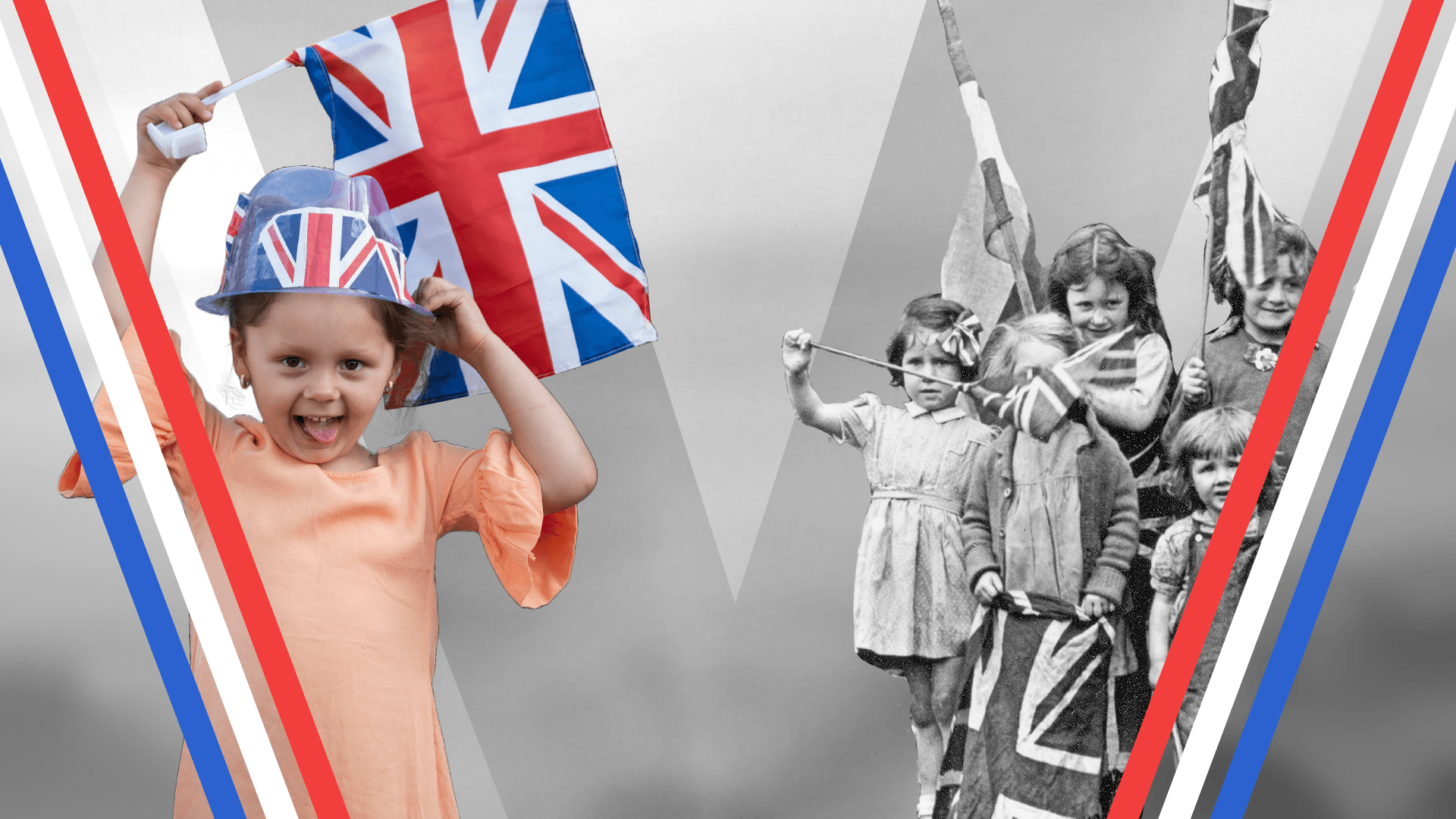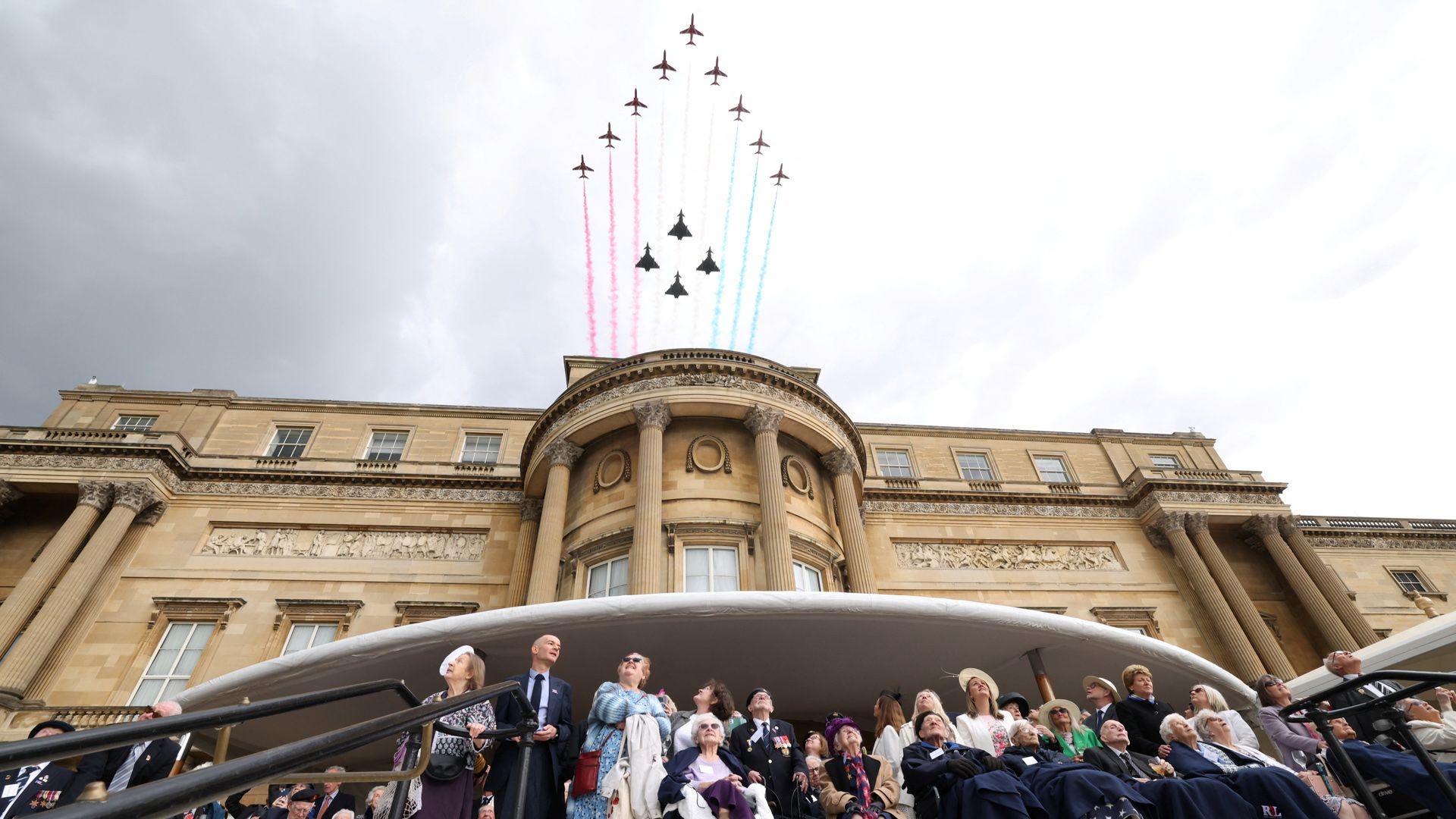I partied outside Buckingham Palace on VE Day
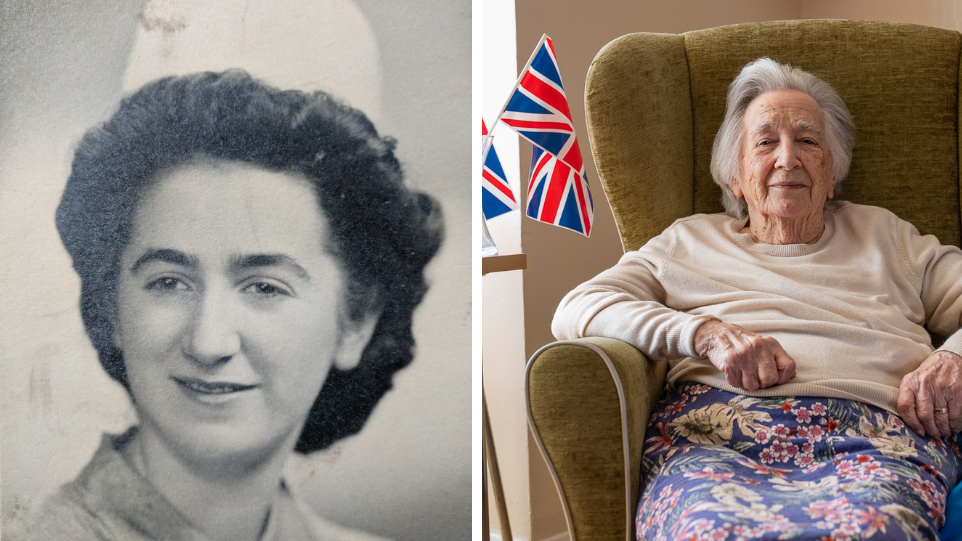
Margaret Johns was a nurse in London during the war and recalls celebrating VE Day at Buckingham Palace, partying well into the night
- Published
A great-grandmother who partied outside Buckingham Palace on VE Day says people will "never understand" what the day was like.
Margaret Johns, 99, was working as a nurse in London when Nazi Germany surrendered to the Allies, ending almost six years of conflict in Europe, on 8 May 1945.
Mrs Johns caught the Tube to central London and partied outside the palace, staying up late into the night.
"They should have given us the day off the next day," said Mrs Johns, from Haverfordwest in Pembrokeshire.
101-year-old WW2 codebreakers reunite for VE Day
- Published3 May
VE Day had 'atmosphere of relief', says WW2 veteran
- Published7 May
Wales marks 80th anniversary of VE Day
- Published5 May
Mrs Johns' education had come to an abrupt end at the age of 16, despite being a good student.
For two years, at the peak of World War Two, she worked at the RAE in Aberporth, Ceredigion, testing ammunition.
She then went to London in 1944 for her nurse's training and worked through blackouts and bombings in London hospitals for five years before returning to Wales, continuing to work into her 80s.
Mrs Johns recalled VE Day [Victory in Europe Day], which saw her catch the Tube to central London and go to Buckingham Palace.
"You can never understand what VE Day was like unless you experienced it," she said.
'It's the end - we're going home'
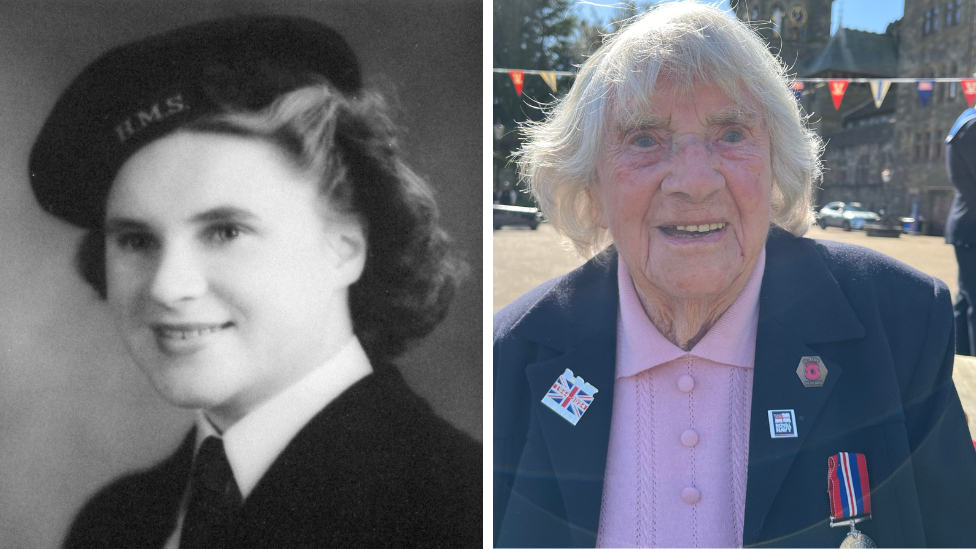
Jean Rees, who served in the Women's Royal Naval Service, also partied in London on VE Day
Jean Rees was part of the Women's Royal Naval Service (WRNS) - known as the Wrens - stationed in Eastleigh, Hampshire, during World War Two.
The 101-year-old, who now lives in Swansea, was conscripted at the age of 19 and her job was to welcome the new recruits, issue their uniforms and offer support to the often terrified young people.
Mrs Rees remembered being known as the "rum boson" onboard HM Raven as she had control over which of "the boys" could have a tipple, and which were underage.
"The Wrens didn't get it... which wasn't fair," she said.
"But life in the Wrens was wonderful."
She met her late husband - Bill Rees from Swansea who was in the Royal Air Force - in an officers' club and he proposed the same evening.
The pair got married the following year and lived happily together until his death in 2015.
Mrs Rees said she had vivid memories of the war, such as the black skies of D-Day in June 1944 and helping returning soldiers find clothes, food and somewhere to stay.
But she also recalled the elation on VE Day, adding: "News went round the camp very quickly and we were given leave to celebrate, so it was up to London.
"When we got there, there were thousands [of people], of all nationalities. Everybody was singing.
"After that, we all went back and began to think 'it's the end, we're going home'."
'I was no hero'
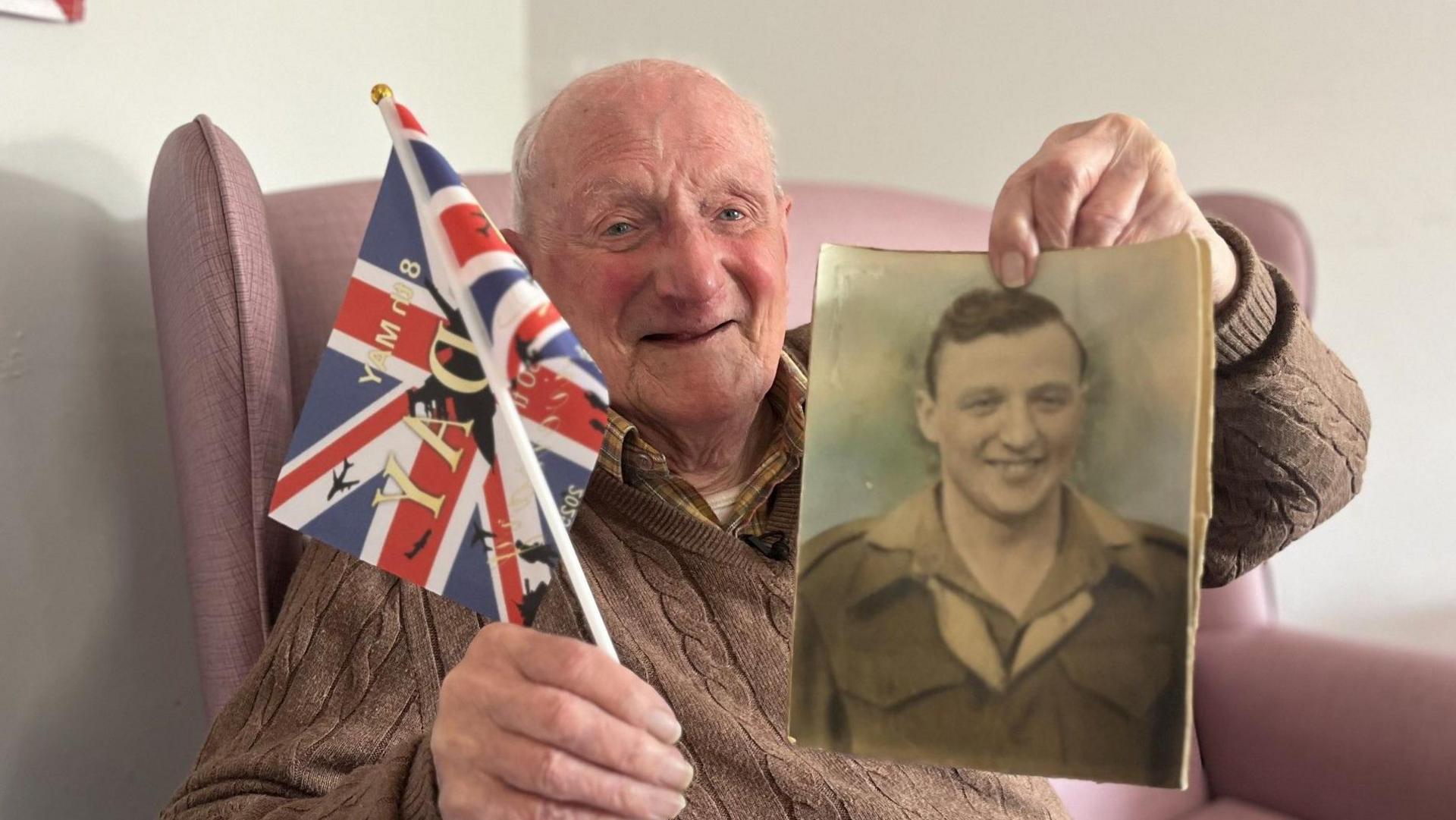
Joseph Gibson recalls being in the desert on VE Day, celebrating with a can of beer and a tin of cigarettes
Joseph Gibson, a great-grandfather who lives in Hawarden, Flintshire, was a so-called Desert Rat during the war - a group of British soldiers who helped defeat the Germans in North Africa.
His tour of duty took him to Egypt and he later served in the Middle East.
Mr Gibson, 99, said the conditions - particularly the heat - were extremely difficult, adding he was "frightened to death".
He recalled being in the desert on VE Day and being given "a can of beer and a tin of cigarettes" to celebrate.
He said it was "wonderful" to return home, but tinged with the sadness of knowing many friends he made along the way were not so lucky.
"I was just a soldier, a normal soldier, like thousands and thousands of others," he said.
"I was no hero."
'The forgotten conscripts'
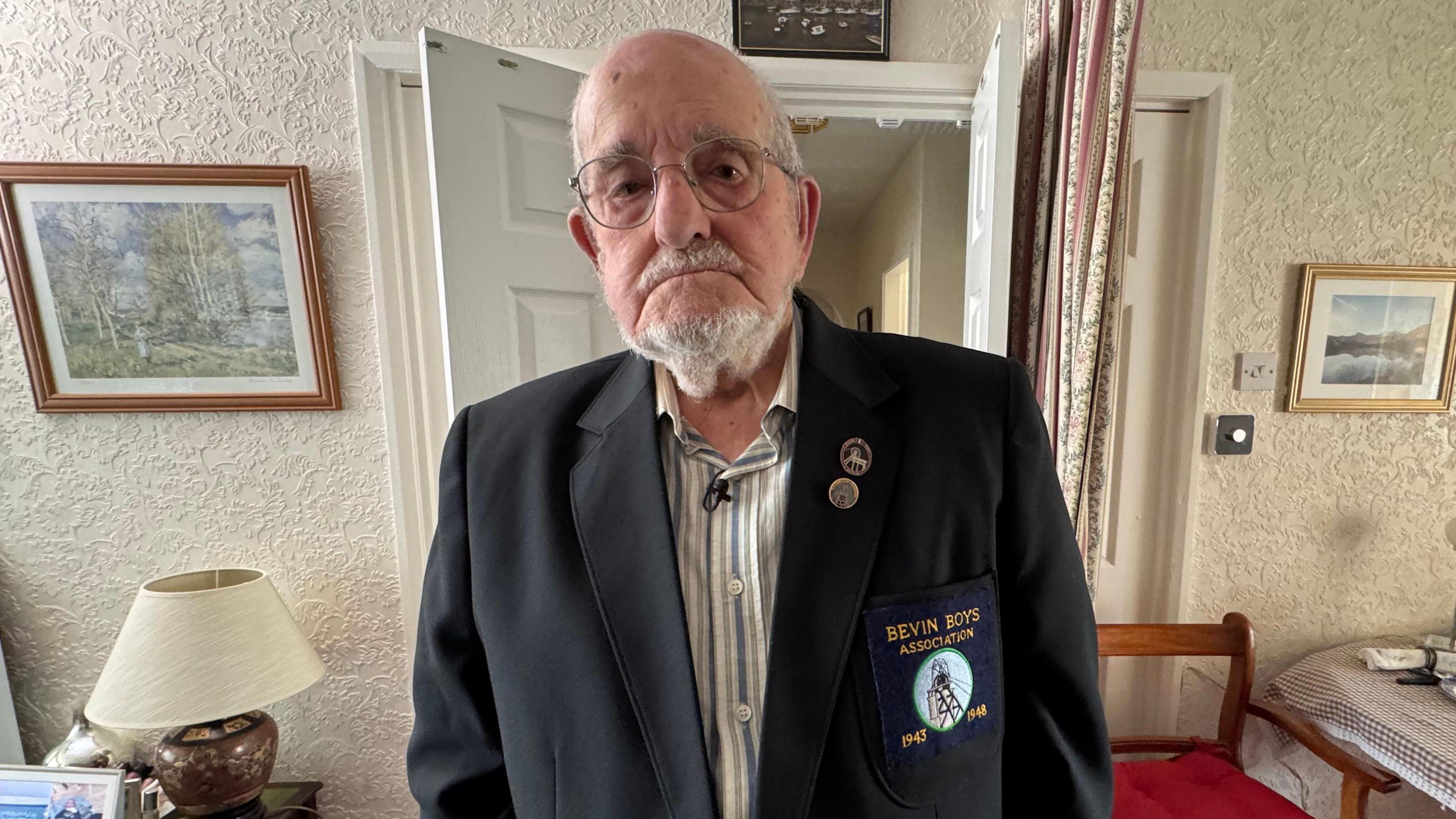
Emrys Hughes says he got little recognition for a "very dangerous" role in the war effort
But VE Day did not mark the end of wartime service for everyone.
Emrys Hughes, 98, was one of the 48,000 so-called Bevin Boys - young men conscripted to work down the mines to help the British effort for coal, instead of being called up for military service.
Dubbed the "forgotten conscripts", they worked long days doing dirty, hard labour.
But Mr Hughes said he received little respect from the general public, who often treated the Bevin Boys as though they were dodging the war.
"Everyone thought I was a conscientious objector," he recalled.
He grew up in the village of Rhostryfan, Gwynedd, and when he was old enough to fight in 1943 he had hoped to get a place in the RAF.
"But I was told my services were no longer required," he said.
"You had no choice, you had to go to the mines."
Watch: 'We had to go to the mines - we had no choice'
Unlike many of those serving in the British military, there was no de-mob after VE Day for the Bevin Boys, with many forced to stay on in the mines until 1948.
There was also no military pension, no guarantees they could return to their previous jobs, or compensation for disabling injuries underground.
It was not until 1995 that the Bevin Boys were officially recognised as veterans by the UK government.
"It showed we did something during the war... Everybody did their bit."
'I never really recovered'

John Eskdale was stationed in Australia on VE day and said, for him and many others, service continued on as normal
John Eskdale, a 100-year-old former Royal Marine, was in Australia on VE Day, working as a driver on a project building air bases between Australia and Japan.
For Mr Eskdale, as for many other military personnel, the war did not end until Victory over Japan Day (VJ Day) in August 1945.
He did not leave the Royal Marines, due to injury, until 1948.
"It's very emotional and hard, looking back," said Mr Eskdale, originally from Bridgend.
He worked on the HMS Charybdis in 1943 when it was torpedoed by German boats, killing more than 400 men.
He spent "a harrowing five hours in the freezing water" before becoming the last of 107 crew members to be rescued.
"I never really recovered from this experience," he said.
Mr Eskdale said he hoped no-one "ever had to witness" the horrors that those who served in World War Two experienced.
He urged people to "take life as it comes", because "you never know what's around the corner".
Additional reporting by George Herd, Iolo Cheung, Sarah Easedale and Greg Davies
Related topics
- Published5 May

- Published8 May
